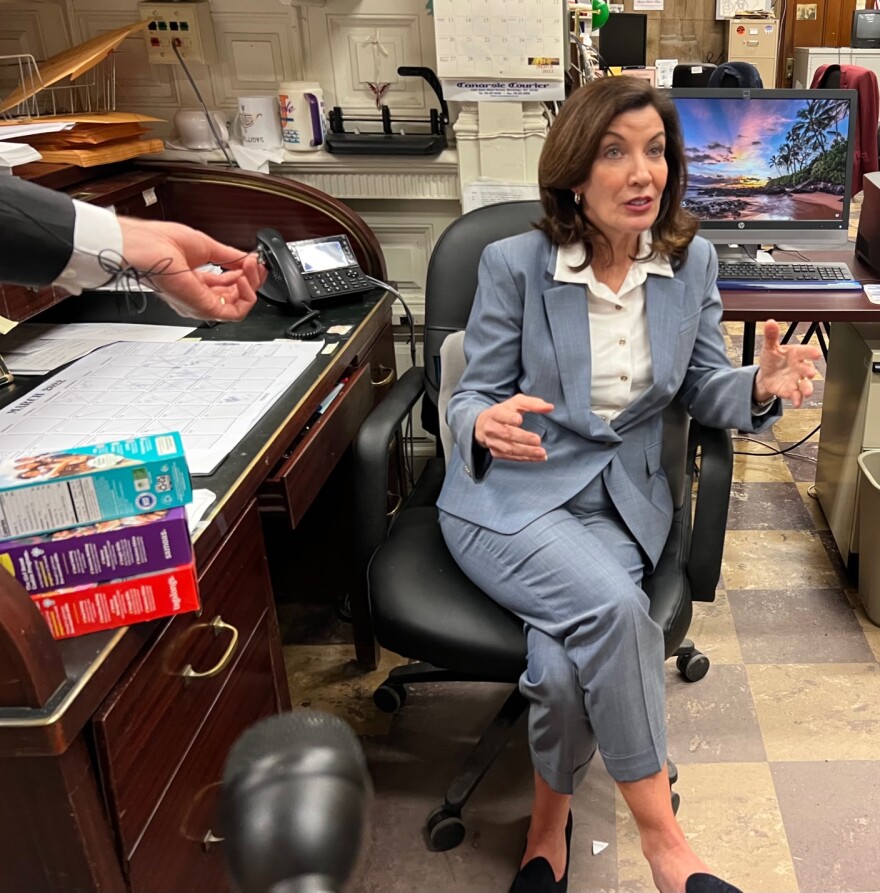On January 1, 2020, New York State ended cash bail for most misdemeanors and non-violent felonies. Criminal justice advocates called it a historic victory. Democrats described it as a groundbreaking measure.
Two weeks later, lawmakers and advocates rallied in Albany in support of the new bail reform. “This bill was so important, we fought [for] years,” said State assembly member Nathalia Fernandez, a Democrat from the Bronx.
“We have finally come to a point that we’re making everything we wanted possible and this is something we fought too hard to even look back for a second," said Fernandez. "We have to fight back and keep moving forward."
The impacts of bail reform
The fight for bail reform had real and immediate impacts, especially for low-income folks and people of color, who have historically spent more time in jail because they couldn't afford bail.
In the first year of the reforms, New York’s jail population dropped by more than 30%. MK Kaishian, a civil rights attorney who focuses on police misconduct cases, says bail reform has transformed the lives of thousands of New Yorkers out on pretrial release.

“People who get to be home with their children, people who get to keep their housing, people who get to keep their jobs and just not experience the destabilization and potential death they would encounter in jail, are the results of bail reform," says Kaishian.
A vast majority of people on pretrial release are not getting rearrested for violent crimes. According to an analysis by the Albany Times Union, 2% of people released because of bail reform went on to commit a violent felony.
“So it means that bail reform did not cause an uptick in folks rearrested simply because they were released prior to trial because of bail reform," said Jullian Harris-Calvin, is a former public defender who now works for the Vera Insitute of Justice.
Rising crime in New York
But there has been an uptick in certain kinds of crimes in the last few years, particularly shootings and homicides.
Sheriffs in upstate counties like Cayuga, Oneida, and Washington have all pointed to that recent rise in violent crime as a reason to roll back bail reform.
State Assemblyman Matt Simpson represents Essex, Warren and parts of Saratoga County. Two of his nephews were recently victims of crime. “What are the odds of one family being impacted by two separate instances of robberies in the North Country?" asked Simpson.
Violent crime rates actually went down in Warren County by 8% from 2019 to 2020, the year after bail reform went into effect. But in Saratoga County, there was a 10% uptick. The trend is a lot clearer in New York City, where murders rose by more than 40% in just one year.
The messaging around bail reform

Homicide rates are still well below the sky-high levels of the early 1990s, but Republicans are using the recent spike in murders as a political lightning rod. Assemblyman Simpson blames state Democrats for the rise in violent crime.
“I think it’s attributed to the overall messaging coming out of Albany, that it’s pro-criminal, anti-law enforcement,” said Simpson.
Voters in New York are largely convinced by the message from Republicans and police unions. According to a Siena poll released this week, 64% of New Yorkers, including a majority of Democrats, think the recent rise in crime is because of bail reform.
Advocates and legal scholars say there’s not enough data to make that case. Bail reform also coincided with the coronavirus pandemic, which left millions of people New Yorkers out of work and disproportionately hurt low-income families and people of color.
Rollbacks proposed by Republicans and Democrats
Still, Republicans continue to push for bail reforms rollbacks. Alison Esposito, who’s running for lieutenant governor, spoke at the recent Republican convention. She and many others want judges to have more discretion to set bail.
They need to be able to weigh dangerousness and past criminal records when they impose sentencing and bail," said Esposito.
Susan Bryant, the executive director of the New York State Defenders Association, says more discretion for judges would introduce more potential for race-based bias. “Dangerousness is a racist standard and it’s an anti-poverty standard," said Bryant.
But top Democrats, including New York City Mayor Eric Adams and Governor Kathy Hochul support giving judges discretion to consider dangerousness. Hochul also wants to reinstate bail for repeat offenders, hate crimes and more gun crimes.
"I feel very committed to making sure we ensure public safety for the state of New Yorkers— all New Yorkers deserve to be safe— as well as respecting the rights of individuals," Hochul told reporters last week.

Pretrial support for New Yorkers
Hochul has been criticized by both Democrats and Republicans for her proposed changes to bail reform, but criminal justice advocates say there is some good in her plan. Hochul wants to spend $10 million on pretrial services like mental health care and counseling as well as supportive housing, all of which could help stabilize people’s lives while they await trial.
While $10 million is a small fraction of what would be needed for the entire state, Jullian Harris-Calvin from the Vera Institute says it’s a good start.
“There are so many ways to invest in supports that’s cheaper and more effective than jailing, but there are nuanced solutions to a nuanced problem and political soundbites are not conducive to nuance and that’s a big problem.”
Regardless of changes to bail reform are included in the state budget, both sides will likely keep fighting for more changes to how bail is handled in New York, whether it’s more rollbacks or more reforms.






